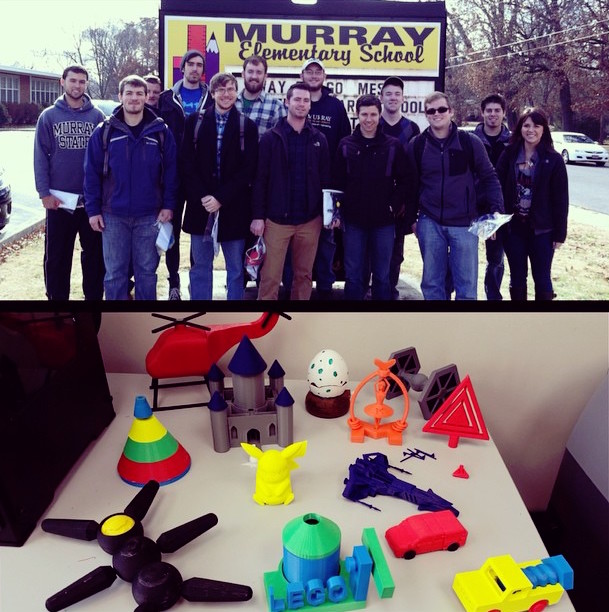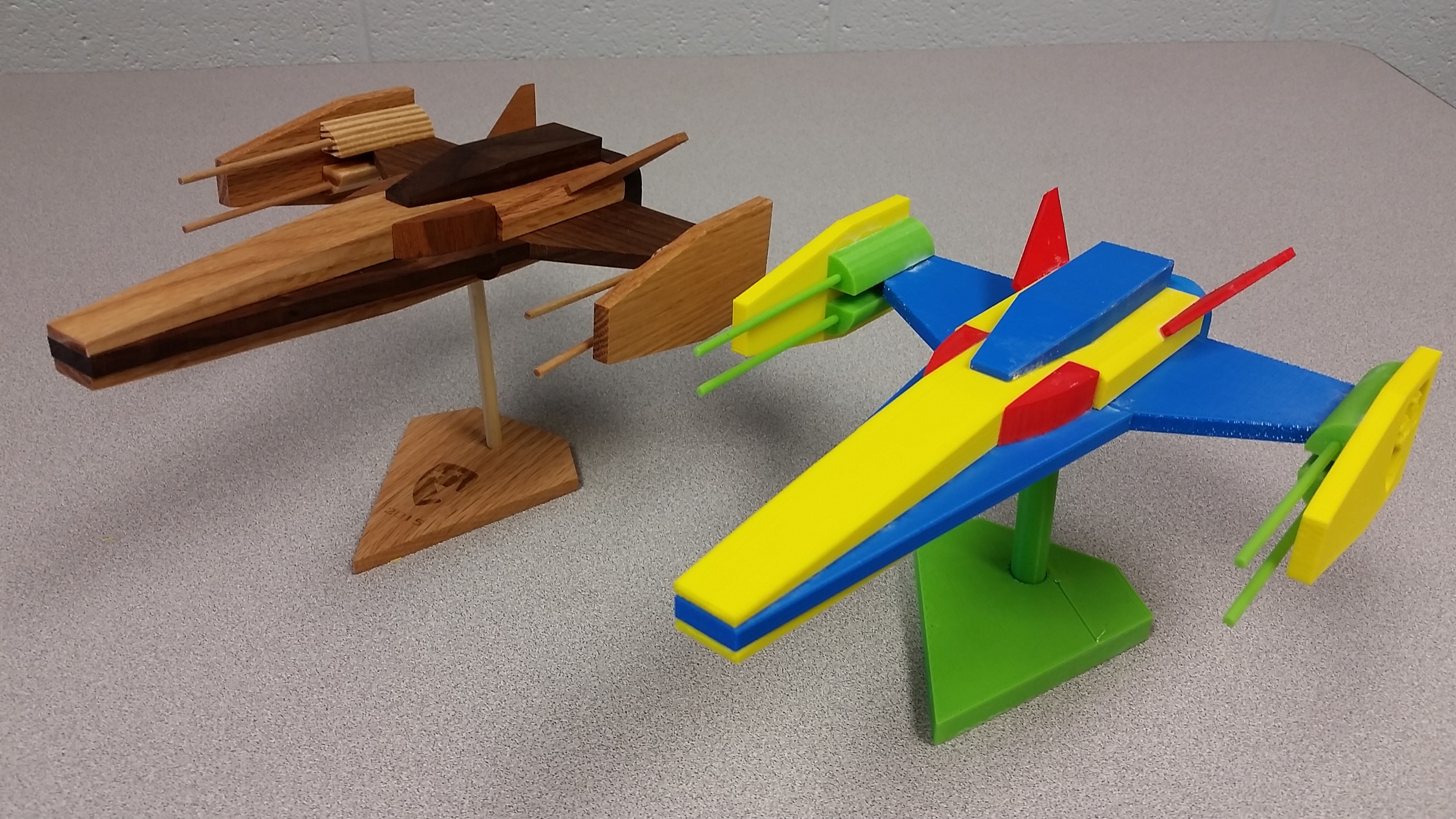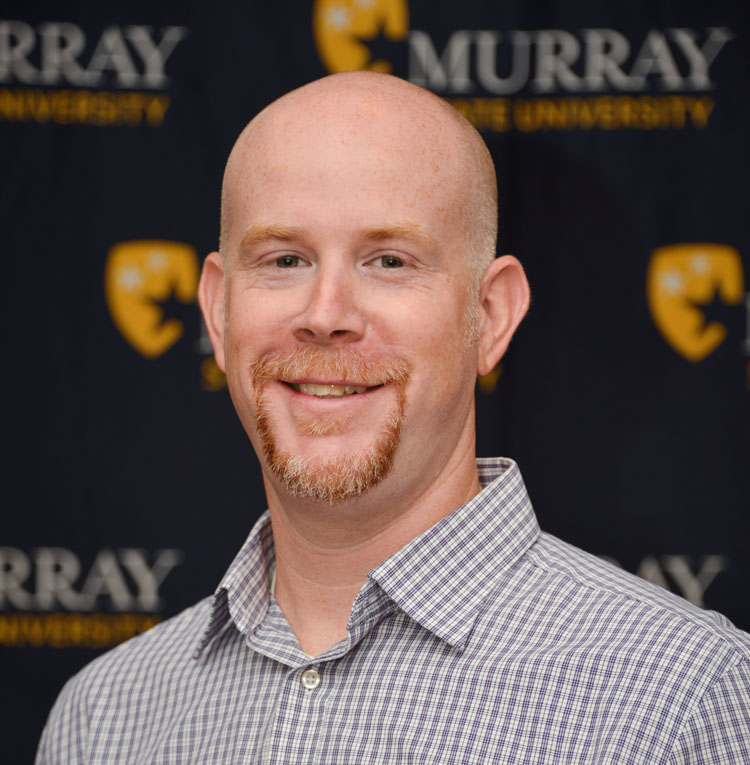
Readers may recall Fabbaloo held a contest with Stratasys in late 2015 to select a notable story of how 3D printing improved someone’s workflow. Now we have that story for you.
The contest winner was Dr. Rudy Ottway, Assistant Professor at the Institute of Engineering, Murray State University in Kentucky, USA. Ottway’s entry was as follows:
I teach in the Engineering Graphics and Design (EGD) program in the Institute of Engineering at Murray State University. The EGD program is a heavy computer-aided design (CAD) based design program that prepares students for a career in product design/development. Students are my customers. Students are passionate about CAD. Students are passionate about design. Students are passionate about 3D printing. 3D printing allows students the opportunity to bring their digital ideas into the physical world. I’ve seen lots of “AHA” moments because of 3D printing. I’ve seen the light bulb burn bright and blow out because of 3D printing. 3D printing has a positive impact on my workflow because of the significant impact it has on the next generation of designers and engineers!
Indeed it does; we’ve seen this effect as well. To find out more about Ottway’s program, we asked him directly.

Fabbaloo: Tell us a little about Murray State University and your program in particular?
Rudy Ottway: Located in Murray, KY, one of The Friendliest Small Towns in America, Murray State University is home of the Racers. Murray State has 10,998 students, a 16 to 1 undergraduate to faculty ratio, and for 25 years in a row has been names a U.S. News Best College.
Engineering Graphics and Design is a four-year, Bachelor of Science degree program in the Institute of Engineering (www.murraystate.edu/engineering). Engineering Graphics and Design prepares students for a career in product design/product development. Engineering Graphics and Design is a computer-aided design (CAD) based degree program where students learn AutoCAD, SolidWorks, and Creo. Additionally, Engineering Graphics and Design curriculum focuses on manufacturing processes and materials, geometric dimensioning & tolerancing (GD&T), ASME/ANSI standards, quality control, prototyping, and 3D printing.
Fabbaloo: When did your group begin using 3D printing, and how did that occur?
Rudy Ottway: We started using 3D printing around 2008 with the purchase of a Stratasys Dimension SST768. The Institute of Engineering received funding for an equipment purchase and we decided that 3D printing would add significant learning value for our faculty, staff, and students.

Fabbaloo: How, exactly are you using 3D printing in your program? What equipment do you use and how do the students interact with it?
Rudy Ottway: Engineering Graphics and Design uses 3D printing for the development of ideas during prototyping, form and fit tests, special end-use products, gadgets, widgets, and trinkets. Here are a few examples.
Each year, as a student organization fund raising activity, our Engineering Graphics and Design students design a wooden vehicle for mass production, approximately 175 vehicles. Design teams sketch, create, and develop 3D CAD models of some type of vehicle. One of the final phases of design is 3D printing. Individual components are 3D printed and a design team will assemble the vehicle. This process provides students feedback on component sizes, manufacturability, ease of assembly, and tolerances. Minor adjustments to the 3D model and 2D drawings are made before production begins. 3D printing, and what students learn from the 3D printed model, assists in eliminating many production errors.
One semester our Engineering Graphics and Design students worked with a local elementary school to design and 3D print a toy for a kindergarten class. Our students learned a lot about working with clients and the kindergarten students (and parents) were super excited to have a unique, personalized toy.
Students have designed and 3D printed catapults, devices for mounting a cell phone to a bicycle, a system to hold dry erase markers, and Rube Goldberg devices. We have had a digital pumpkin carving and Valentine’s Day contests where the winning designs are 3D printed. Students have 3D printed parts to be used as a form to create a silicone mold for molding chocolate. And, students have designed and 3D printed various items to solve design problems in their personal lives.
We have several 3D printers in the Institute of Engineering including the Dimension SST768, Stratasys uPrint SE Plus, Afinia H480, two Ultimaker 2’s, and a Formlabs Form 1+. We currently have two student workers, which we call 3D Printing Specialists, to manage the workflow.
Fabbaloo: What effects have you seen on the students after using 3D printing technology in your workflow?
Rudy Ottway: 3D printing inspires students to create. 3D printing fosters learning and exploration. 3D printing allows the opportunity for a student’s digital design to become a reality. The ability for a student to physically hold a 3D print in their hand is invaluable to the learning process.

Fabbaloo: What ideas do you have to make even more effective use of 3D printing in the future?
Rudy Ottway: I’m always looking to challenge myself, our students, and the Engineering Graphic and Design curriculum. As 3D printing and design for 3D printing becomes more widespread, it would be great to offer a course focusing solely on 3D printing technologies, applications, design, and use of machines.
We will continue to add 3D printing to our current courses requiring students to complete projects or tasks that force them to solve design problems in a real world setting. I want to create educational opportunities from which students can draw upon their experience in an interview for an internship or a full time job. Students will hopefully begin to build an engineering design portfolio that demonstrates applied learning to solve design problems. 3D printing will play a huge part in that process.
I will continue research in the area of 3D printing. I believe information and data from research can be used to assist educators in making decisions when implementing 3D technologies in the classroom.

